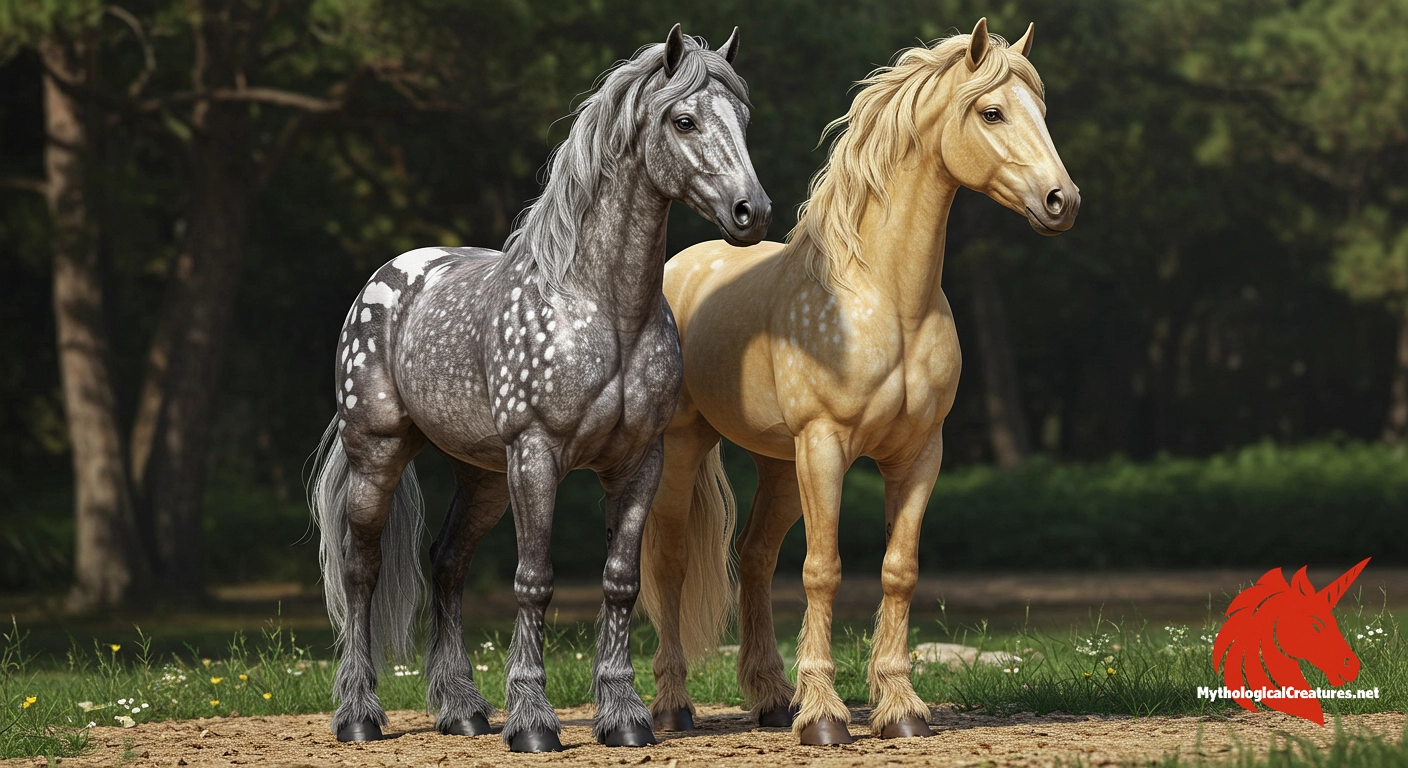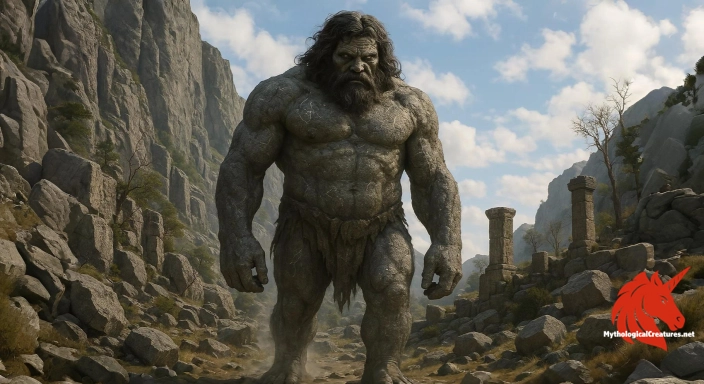Balius and Xanthus: Balius and Xanthus are two immortal horses from Greek mythology, born to the harpy Podarge and the West Wind, Zephyrus.

Balius and Xanthus
Balius and Xanthus - They represent divine speed, prophetic insight, and the harmonious blend of nature and divinity.
Origins & First Encounters
Balius and Xanthus emerge from the mists of Greek mythology as two immortal horses celebrated for their divine origins and unmatched vitality. Born of the harpy Podarge and the gentle West wind Zephyrus, they symbolize the harmonious melding of the celestial and the terrestrial. Their earliest attestation is woven into epic narratives that highlight both their supernatural grace and their crucial roles in heroic adventures. While classical sources firmly root their origin in this union, alternative accounts introduce Poseidon as a paternal figure, especially for Xanthus, adding layers of mythological complexity. The horses have been associated with legendary figures and pivotal moments in mythical battles, underscoring their importance in ancient storytelling. Their immortal nature not only set them apart from mortal steeds but also elevated them to symbols of divine speed and foresight. This duality of nature and divinity resonated deeply with ancient audiences, who revered the idea of nature infused with the essence of the gods. The cultural context in which these creatures thrived was one where divine interventions and the supernatural were common threads in the social and literary fabric. Their story continues to fascinate modern enthusiasts, echoing the timeless appeal of mythic power interlaced with human experience.
Source Texts & Tale Variants
The tales of Balius and Xanthus are preserved in a diverse array of ancient texts and artistic representations that have intrigued scholars for centuries. They are most famously mentioned in the Homeric epics, where their explosive speed and ethereal presence capture the imagination of audiences. Early vase paintings and sculptures further depict their dynamic forms, emphasising both their beauty and otherworldly origin. Various literary sources introduce an intriguing divergence in their lineage, with some traditions attributing Xanthus’s birth to Poseidon, while others insist on the union of Podarge and Zephyrus. In poetic narratives, the horses are sometimes endowed with prophetic abilities, a trait that invites comparison with other mythic animals of divination. The multiplicity of sources has generated a rich tapestry of interpretations, where oral traditions blend with literary embellishments. Folkloric narratives handed down through generations add even more nuance to their characterisation, often framing them as harbingers of destiny in crucial moments of mythic conflict. Numerous fragments of ancient texts reveal the evolving portrayal of these immortal horses as custodians of divine will. Such varied accounts not only highlight the dynamic nature of myth but also the interplay between literary and visual traditions in ancient culture.
Form & Powers
Artistic and literary descriptions depict Balius and Xanthus as equine paragons of divine beauty and athleticism. Their forms are rendered with an emphasis on fluid motion and muscular grace, which distinguishes them from ordinary horses. In some traditions, Balius is suggested to bear a dappled coat, hinting at a remarkable pattern that captures the light and symbolises the interplay of shadow and brilliance. Xanthus, whose name translates to 'blonde', is often described with a resplendent golden coat that seems to shimmer with an inner light. Their eyes are imagined as reflecting the wisdom of the heavens, further emphasising their connection to the divine. The depiction of their manes and tails flowing in the wind adds a sense of perpetual motion and energy to their presence. Some ancient artists highlighted subtle halos or divine motifs interwoven with their features, underscoring their extraordinary birth and purpose. Variations in size and form appear in different accounts, with many artworks portraying them as larger and more imposing than mortal hunters would ever expect. This emphasis on physical perfection not only served to awe audiences but also to symbolize the intersection of natural beauty and otherworldly power.
Regional Faces
The myth of Balius and Xanthus reflects a tapestry of regional adaptations that add dimension to their story. Certain Greek city-states emphasised their martial and heroic aspects, linking the horses closely to the mythic warriors they served. In coastal areas influenced by seafaring traditions, the West wind’s element was more prominently integrated into their narrative, highlighting themes of speed and fluidity. Other regions opted to stress the divine bloodline, often aligning their origins with local deities or attributing additional supernatural feats to the horses. The local artistic depictions sometimes adjusted their appearance, adapting facial features and postures to reflect regional aesthetics and cultural ideals. In some parts of the ancient world, the prophetic prowess attributed to Xanthus was expanded upon, aligning the horse with local oracular traditions and rites. Community festivals and local mythology occasionally incorporated these horses as symbols of divine favour and heroic destiny. The regional variations also allowed each community to claim a piece of the divine narrative, weaving Balius and Xanthus into their cultural heritage. These diverse portrayals ensured that while their core attributes remained consistent, the horses could be appreciated through multiple, culturally resonant lenses.
Cultural Parallels
The narrative of Balius and Xanthus resonates with a broader tradition of divine equines that span various mythologies, providing rich ground for comparative analysis. Across different cultures, horses with celestial origins often serve as symbols of speed, foresight, and heroic ambition. Similar to their Greek counterparts, the immortal steeds featured in Celtic and Norse mythologies carry connotations of fire, wind, and even prophetic wisdom. In several Indo-European traditions, the divine nature of these horses marks them as mediators between the mortal realm and the supernatural towers of the gods. The prophetic qualities seen in Xanthus, for instance, find echoes in other cultures where animals are believed to foretell fate or bring messages from the divine. This cross-cultural phenomenon underscores a universal human affinity towards horses as embodiments of freedom, power, and mysticism. In some Eastern traditions, the synthesis of nature and divinity expressed through equine imagery reinforces a shared belief in the transformative power of the natural world. The comparison highlights how Balius and Xanthus, while uniquely Greek in their mythic roots, belong to a global narrative of revered, supernatural beasts. Their legacy is emblematic of the enduring human fascination with creatures that traverse both physical landscapes and mythic realms.
Legacy & Modern Evolution
Throughout the ages, Balius and Xanthus have maintained a presence that stretches from ancient epic poems to contemporary reinterpretations of myth. Their depiction in classical literature set a precedent for what it meant to be an immortal steed, and they continue to inspire artistic endeavour in modern times. Renaissance artists revisited their image with renewed vigour, celebrating the harmony of strength and grace that the horses embodied. Modern literature, film, and theatre have adapted their myth to resonate with current themes of destiny, transformation, and the interplay between nature and the divine. They are frequently cited as archetypal examples of how myth can capture human ideals of beauty, power, and prophecy. Contemporary scholars and enthusiasts alike explore their narrative as a means of understanding how ancient myths evolve over time to reflect changing cultural landscapes. Their story, replete with divine lineage and prophetic undertones, continues to captivate new audiences and influence creative works in various media. The reimagining of these immortal horses in popular culture ensures that their myth is not merely locked in the past but thrives as a living dialogue with modern mythology. Their legacy is ultimately a testimony to the timeless appeal of myth, illustrating how divine narratives adapt across epochs while maintaining their core symbolic significance.
Interesting Fact
One intriguing aspect of their myth is the duality of their paternal lineage, with one tradition attributing their power to the West Wind and another to the sea god Poseidon.
Quick Creature Info
Origin:
Associations:
Our Mythic Legendary Rating:

Habitat:
Supernatural Powers:
Physical Attributes:
Abilities:
Behavior:
Lore:
References
Discover Another Mythical Legend You May Not Have Heard Of?
Uncover the mysteries of ancient folklore and expand your knowledge of legendary beings from cultures around the world.
Dare to Meet the Clytius....
Mythical Disclaimer: The images and data on this site are derived from various historical and literary sources, but we have found that many myths often have multiple versions and interpretations across references, sometimes contradictory. As a result, these creature depictions are artistic interpretations—imaginative blends of folklore, legend, and a dash of AI guesswork. Because creature descriptions vary widely, our illustrations and accompanying information represent our best effort to honor mythology while bridging creative gaps. Enjoy these interpretations—just remember, we've done our best to respect the stories and validate available data, but in the realm of mythology, details often shift, imagination leads the way, and nothing is ever set in stone!
Curated by the Mythological Creatures Team (rev. May 2025)
